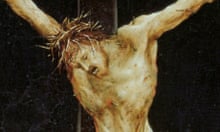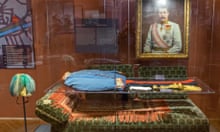It's a whirling abstract spiralling vortex of colour – but is it art?
Ryan Fox attached a GoPro camera to a car wheel and drove around with spectacular results. His video, made for a class at the University of Wisconsin, would surely have intrigued such early 20th-century avant garde artists as Laszlo Moholy-Nagy or Aleksandr Rodchenko.
Moholy-Nagy constructed a Light-Space Modulator, a machine that created bubbling projected patterns of light and shadow as a backdrop for performances. Created in 1930 it is, of course, the ancestor of the lightshows that became part of psychedelic rock more than 30 years later. In 1965 Gustav Metzger – who had taught The Who's Pete Townshend at art college – created his Liquid Crystal Environment, one of the first psychedelic artworks proper. In 1966 Andy Warhol opened the Exploding Plastic Inevitable, a psychedelic club where light shows devised by Danny Williams and projections of Warhol's films were screened on to the faces and bodies of the Velvet Underground as they played.
Meanwhile Metzger's idea of the liquid crystal light show was being taken up by British psychedelic bands. Pink Floyd created spectacular shows mixing liquid light with pyrotechnics. Chemistry was becoming art – in more ways than one.
Because of this legacy of avant garde art channeled through the drugged rock music of the late 1960s, it seems we can't look at a video like the one Ryan Fox has made without saying, 'Wow man, it's psychedelic'. Art and hippies have taught us to see beauty in random patterns of light.
Is that just a delusion, or does abstract, dynamic colour liberate the human brain in some basic way?
Of course it does. Just as Matisse sets the mind free when he saturates a room with red, so do ever-changing circles or clouds of light perform instant brain surgery that releases joyful and vertiginous impulses. Stanley Kubrick caught the mystery of psychedelia profoundly in the light tunnel through which an astronaut passes into a new dimension of reality in 2001: A Space Odyssey. The very universe seems to burst open when we are immersed in colour.
So excuse me while I kiss the sky ...





Comments (…)
Sign in or create your Guardian account to join the discussion